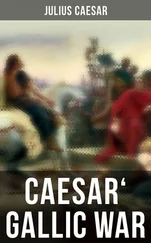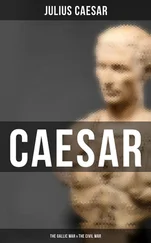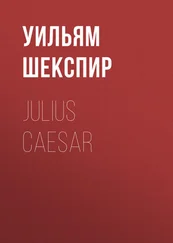Napoleon III - History of Julius Caesar Vol. 2 of 2
Здесь есть возможность читать онлайн «Napoleon III - History of Julius Caesar Vol. 2 of 2» — ознакомительный отрывок электронной книги совершенно бесплатно, а после прочтения отрывка купить полную версию. В некоторых случаях можно слушать аудио, скачать через торрент в формате fb2 и присутствует краткое содержание. Жанр: foreign_antique, foreign_prose, Биографии и Мемуары, на английском языке. Описание произведения, (предисловие) а так же отзывы посетителей доступны на портале библиотеки ЛибКат.
- Название:History of Julius Caesar Vol. 2 of 2
- Автор:
- Жанр:
- Год:неизвестен
- ISBN:нет данных
- Рейтинг книги:4 / 5. Голосов: 1
-
Избранное:Добавить в избранное
- Отзывы:
-
Ваша оценка:
- 80
- 1
- 2
- 3
- 4
- 5
History of Julius Caesar Vol. 2 of 2: краткое содержание, описание и аннотация
Предлагаем к чтению аннотацию, описание, краткое содержание или предисловие (зависит от того, что написал сам автор книги «History of Julius Caesar Vol. 2 of 2»). Если вы не нашли необходимую информацию о книге — напишите в комментариях, мы постараемся отыскать её.
History of Julius Caesar Vol. 2 of 2 — читать онлайн ознакомительный отрывок
Ниже представлен текст книги, разбитый по страницам. Система сохранения места последней прочитанной страницы, позволяет с удобством читать онлайн бесплатно книгу «History of Julius Caesar Vol. 2 of 2», без необходимости каждый раз заново искать на чём Вы остановились. Поставьте закладку, и сможете в любой момент перейти на страницу, на которой закончили чтение.
Интервал:
Закладка:
Such a column of 8,500 carriages, supposing them to march in file, one carriage at a time, on a single road, could not occupy less than thirty-two leagues in length, if we reckon fifteen mètres to each carriage. This remark explains the enormous difficulties the emigration would encounter, and the slowness of its movements: we need, then, no longer be astonished at the twenty days which it took three quarters of the column to pass the Saône.
We have not comprised the provisions of grain for the animals themselves: yet it is difficult to believe that the Helvetii, so provident for their own wants, had neglected to provide for those of their beasts, and that they had reckoned exclusively for their food on the forage they might find on the road.
176
De Bello Gallico , I. 11.
177
It is an error to translate Arar, quod per fines Æduorum et Sequanorum in Rhodamam influit , by the words, “the Saône, which forms the common boundary line of the Ædui and the Sequani.” Cæsar always understands by fines , territory, and not boundary line. He expresses himself very differently when he speaks of a river separating territories. ( De Bello Gallico , I. 6, 83; VII. 5.) The expression per fines thus confirms the supposition that the territories of these two peoples extended on both sides of the Saône. ( See Plate 2. )
178
De Bello Gallico , I. 12. – The excavations, carried on in 1862 between Trévoux and Riottier, on the plateaux of La Bruyère and Saint-Bernard, leave no doubt of the place of this defeat. They revealed the existence of numerous sepulchres, as well Gallo-Roman as Celtic. The tumuli furnished vases of coarse clay, and many fragments of arms in silex, ornaments in bronze, iron arrow-heads, fragments of sockets. These sepultures are some by incineration, others by inhumation. In the first, the cremation had nowhere been complete, which proves that they had been burnt hastily, and excludes all notion of an ordinary cemetery. Two common fosses were divided each into two compartments, one of which contained cinders, the other human skeletons, thrown in pell-mell, skeletons of men, women, and children. Lastly, numerous country ovens line, as it were, the road followed by the Helvetii. These ovens, very common at the foot of the abrupt hills of Trévoux, Saint-Didier, Frans, Jassans, and Mizérieux, are found again on the left bank of the Ain and as far as the neighbourhood of Ambronay.
179
Cæsar declares, on two different occasions, the fixed design of the Helvetii to establish themselves in the country of the Santones (I. 9 and 11), and Titus Livius confirms this fact in these words: “Cæsar Helvetios, gentem vagam, domuit, quæ, sedem quærens, in provinciam Cæsaris Narbonem iter facere volebat.” ( Epitome , CIII.) Had they, for the execution of this project, the choice between several roads (the word “road” being taken here in the general sense)? Some authors, not considering the topography of France, have believed that, to go to the Santones, the Helvetii should have marched by the shortest line, from east to west, and passed the Loire towards Roanne. But they would have had first to pass, in places almost impassable, the mountains which separate the Saône from the Loire, and, had they arrived there, they would have found their road barred by another chain of mountains, that of Le Forez, which separates the Loire from the Allier.
The only means of going from the Lower Saône into Saintonge consists in travelling at first to the north-west towards the sources of the Bourbince, where is found the greatest depression of the chain of mountains which separates the Saône from the Loire, and marching subsequently to the west, to descend towards the latter river. This is so true, that at an epoch very near to our own, before the construction of the railways, the public conveyances, to go from Lyons to La Rochelle, did not pass by Roanne, but took the direction to the north-west, to Autun, and thence to Nevers, in the valley of the Loire. We understand, in exploring this mountainous country, why Cæsar was obliged to confine himself to pursuing the Helvetii, without being ever able to attack them. We cannot find a single point where he could have gained upon them by rapidity of movement, or where he could execute any manœuvre whatever.
180
The Romans used little precision in the division of time. Forcellini ( Lex. , voce Hora ) refers to Pliny and Censorinus. He remarks that the day – that is, the time between the rising and setting of the sun – was divided into twelve parts, at all seasons of the year , and the night the same, from which it would result that in summer the hours of the day were longer than in winter, and vice versa for the nights. – Galenus ( De San. Tuend. , VI. 7) observed that at Rome the longest days were equal to fifteen equinoctial hours. Now, these fifteen hours only reckoning for twelve, it happened that towards the solstice each hour was more than a quarter longer than towards the equinox. This remark was not new, for it is found in Plautus. One of his personages says to a drunkard: “Thou wilt drink four good harvests of Massic wine in an hour!” “Add,” replied the drunkard, “in an hour of winter.” (Plautus, Pseudolus , v. I, 302, edit. Ritschl.) – Vegetius says that the soldier ought to make twenty miles in five hours, and notes that he speaks of hours in summer, which at Rome, according to the foregoing calculation, would be equivalent to six hours and a quarter towards the equinox. (Vegetius, Mil. , I. 9.)
Pliny ( Hist. Nat. , VII. 60) remarks that, “at the time when the Twelve Tables were compiled, the only divisions of time known were the rising and setting of the sun; and that, according to the statement of Varro, the first public solar dial was erected near the rostra, on a column, by M. Valerius Messala, who brought it from Catania in 491, thirty years after the one ascribed to Papirius; and that it was in 595 that Scipio Nasica, the colleague of M. Popilius Lænas, divided the hours of night and day, by means of a clepsydra or water-clock, which he consecrated under a covered building.”
Censorinus ( De Die Natali , xxiii., a book dated in the year 991 of Rome, or 338 A.D.) repeats, with some additions, the details given by Pliny. “There is,” he says, “the natural day and the civil day. The first is the time which passes between the rising and setting of the sun; on the contrary, the night begins with the setting and ends with the rising of the sun. The civil day comprises a revolution of the heaven – that is, a true day and a true night; so that when one says that a person has lived thirty days, we must understand that he has lived the same number of nights.
“We know that the day and the night are each divided into twelve hours. The Romans were three hundred years before they were acquainted with hours. The word hour is not found in the Twelve Tables. They said in those times, ‘before or after mid-day.’ Others divided the day, as well as the night, into four parts – a practice which is preserved in the armies, where they divide the night into four watches.” Upon these and other data, M. Le Verrier has had the goodness to draw up a table, which will be found at the end of the volume, and which indicates the increase or decrease of the hours with the seasons, and the relationship of the Roman watches with our modern hours. ( See Appendix B. )
181
De Bello Gallico , I. 22.
182
Интервал:
Закладка:
Похожие книги на «History of Julius Caesar Vol. 2 of 2»
Представляем Вашему вниманию похожие книги на «History of Julius Caesar Vol. 2 of 2» списком для выбора. Мы отобрали схожую по названию и смыслу литературу в надежде предоставить читателям больше вариантов отыскать новые, интересные, ещё непрочитанные произведения.
Обсуждение, отзывы о книге «History of Julius Caesar Vol. 2 of 2» и просто собственные мнения читателей. Оставьте ваши комментарии, напишите, что Вы думаете о произведении, его смысле или главных героях. Укажите что конкретно понравилось, а что нет, и почему Вы так считаете.












